Springtime in the estuary brings about many ecological changes, including for our eelgrass beds. While from a distance the large green patches of eelgrass don’t appear to be undergoing much of a transformation, a closer look reveals a dramatically different story. With the transition from winter to spring, rising water temperatures initiate the flowering and seed-producing stages of eelgrass. This results in the growth of unique reproductive shoots.
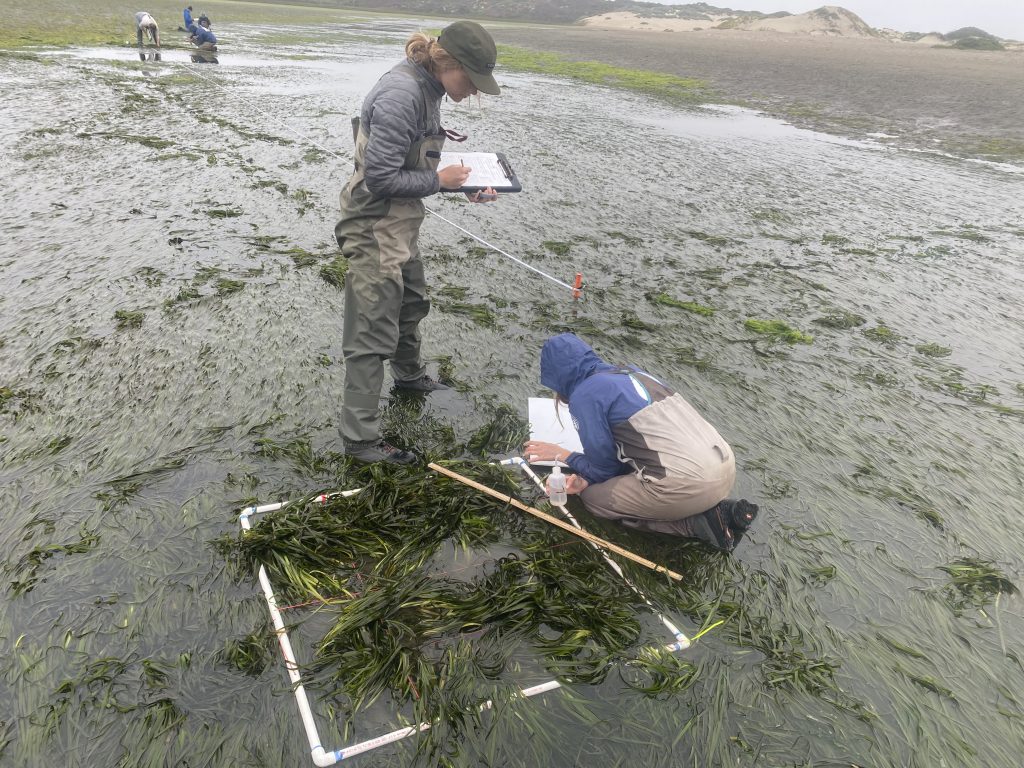
During our annual spring eelgrass monitoring, which focuses on collecting data to assess eelgrass health, we make note of the prevalence of reproductive shoots at each site. This allows us to observe trends in eelgrass reproduction within the Morro Bay estuary. Understanding this process is valuable for future restoration efforts in the event of a widespread eelgrass decline.
Eelgrass Reproduction
Eelgrass can reproduce both asexually, through the spreading of its root-like rhizomes, and sexually, through the production of flowers and seeds. Asexual reproduction results in the bulk of eelgrass growth. However, sexual reproduction is also important because it promotes genetic diversity and dispersal to new locations.
Flowering is a seasonal occurrence, but the exact timing can vary between years and can be quite different in other estuarine systems. Aside from the variability in timing, the stages of reproduction are consistent. As the waters warm and light conditions change, flowering shoots begin to develop from mature vegetative shoots. The flowering shoots produce branches called spathes. These contain the reproductive structures where flowers will bloom and seeds will develop.
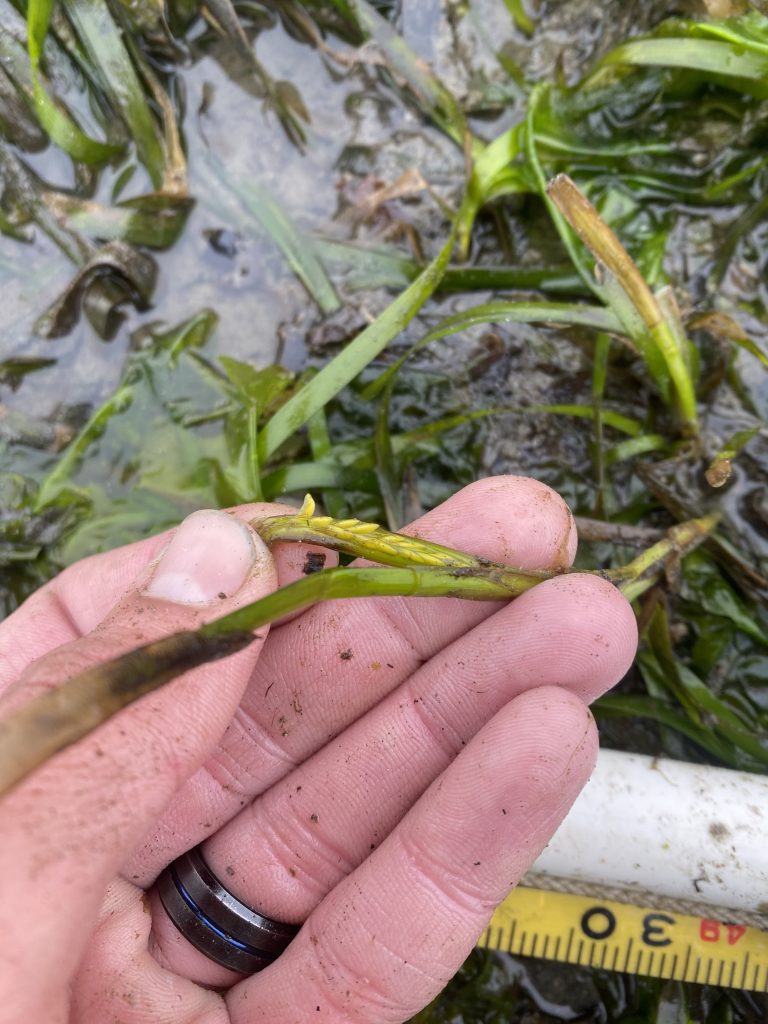
Female flowers, called pistils, are the first to emerge from the spathe. Approximately four days later, the male flowers, or anthers, appear from the same spathe and release pollen. The pollen is carried along by currents to the pistils of other flowering shoots. There, fertilization occurs and seed production begins.
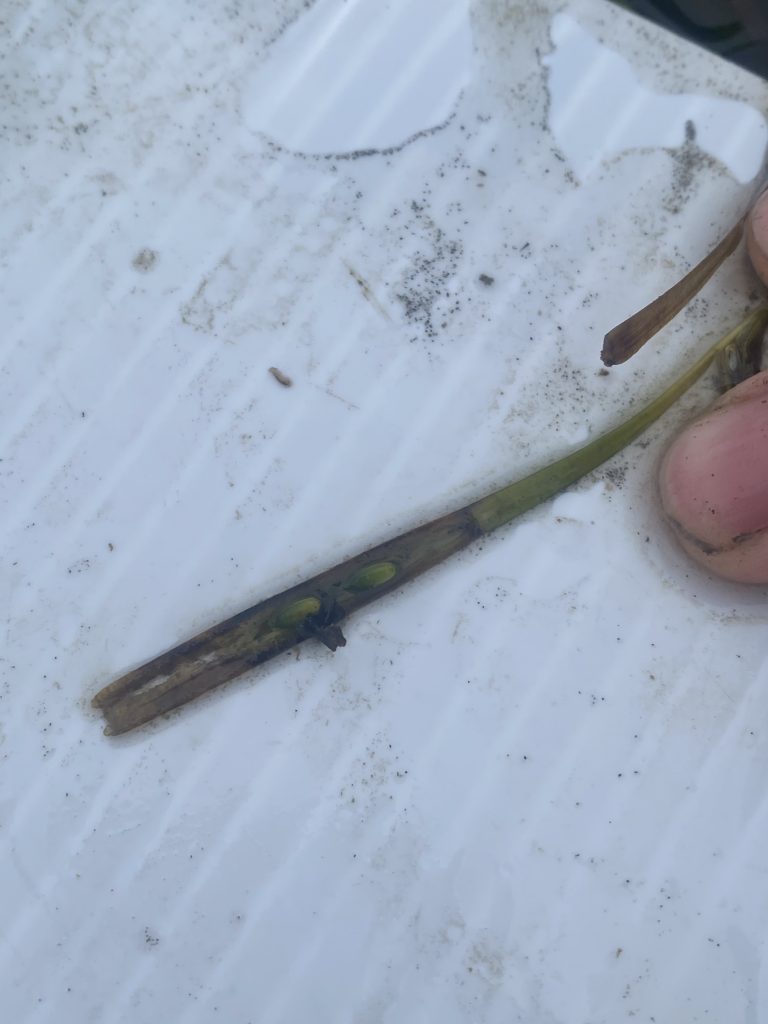
After four to six weeks, the mature seeds are ripe and ready for dispersal. Some of the spathes will release their seeds directly into the existing eelgrass bed. However, other spathes are easily dislodged and will float to new locations where they’ll drop their seeds. Through this method of seed dispersal, new beds can be established up to 60 miles away from the original bed. Once the seeds sink into the sediment, environmental conditions such as a drop in temperature and oxygen concentration will trigger germination that will produce the next generation of eelgrass.
Flowering Shoots in Morro Bay
While collecting measurements of reproductive shoot density is new to our monitoring protocol, we’ve already seen an interesting trend emerge from this year’s results. There is a clear increase in the proportion of flowering shoots at sites farther from the estuary mouth. Not only that, but the flowering shoots in the back bay tend to be at more advanced stages in the reproduction process than those in the front bay.
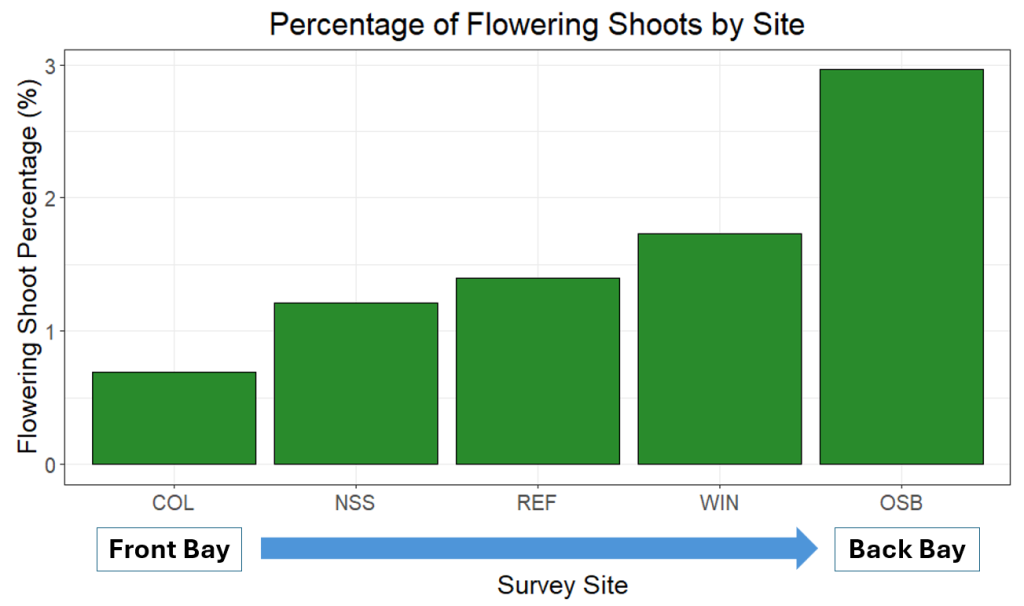
This difference in flowering shoots is likely due to delayed warming in the front of the estuary. In this area, water is constantly exchanged with the ocean during tidal cycles. While the front bay stays relatively cold, the back of the estuary experiences less frequent tidal exchange, resulting in the shallow waters sitting for longer and warming in the sun. Eelgrass flowering is initiated when water temperature reaches certain thresholds. While these thresholds vary across the geographic range of eelgrass, in general the temperature must reach 10 °C for the development of reproductive structures and 15 °C for flowering and seed production. These thresholds are exceeded much sooner in the back bay, resulting in eelgrass beds with more active flowering shoots.
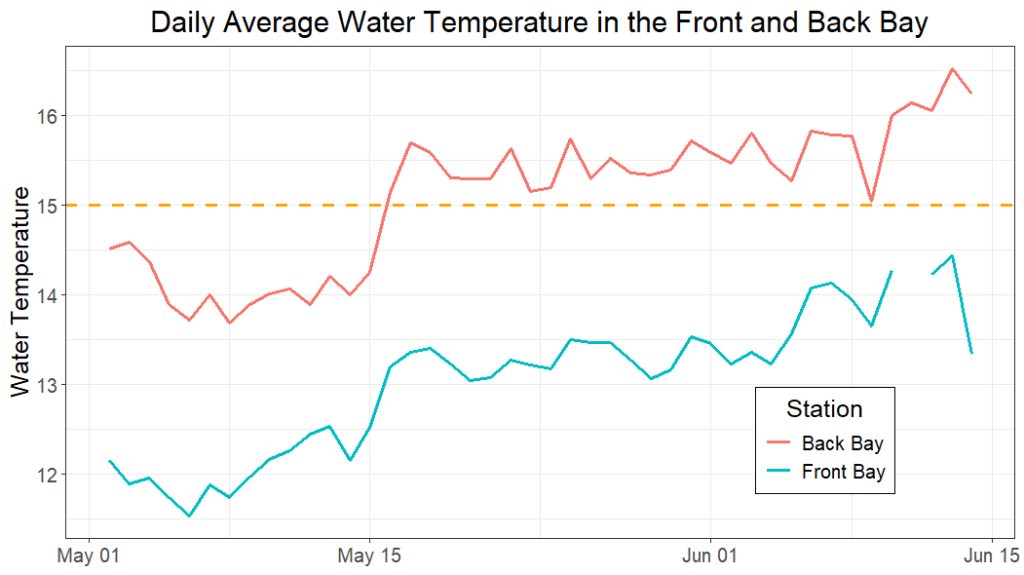
Significance for Conservation and Management
Currently, the estuary is supporting more eelgrass acreage than in recorded history, but the unpredictable nature of past declines means that it’s highly unlikely to stay this way forever. Reproductive shoot density has been linked to a bed’s resilience in the face of decline, a valuable metric for the informed management of this resource (Vercaemer et al 2021). In addition, tracking patterns of eelgrass flowering and seed production while we have healthy and expansive beds is important for establishing a baseline that can be compared to future years. Major deviations from these patterns can be indicators of a stress response. By tracking this potential warning sign for an impending decline, the Estuary Program and its partners are better situated to respond with monitoring, research, and restoration efforts.
Help us protect and restore the Morro Bay estuary!
- Donate to the Estuary Program today and support our work in the field, the lab, and beyond.
The Estuary Program is a 501(c)3 nonprofit. We depend on funding from grants and generous donors to continue our work. - Support us by purchasing estuary-themed gear from ESTERO. This locally owned and operated company donates 20% of proceeds from its Estuary clothing line and 100% of Estuary decal proceeds to the Estuary Program. Thank you, ESTERO!
- Purchase items from the Estuary Program’s store on Zazzle. Zazzle prints and ships your items, and the Estuary Program receives 10% of the proceeds.
- Subscribe to our seasonal newsletter: Between the Tides!
- We want to hear from you! Please take a few minutes to fill out this short survey about what type of events you’d like to see from the Estuary Program. We appreciate your input!